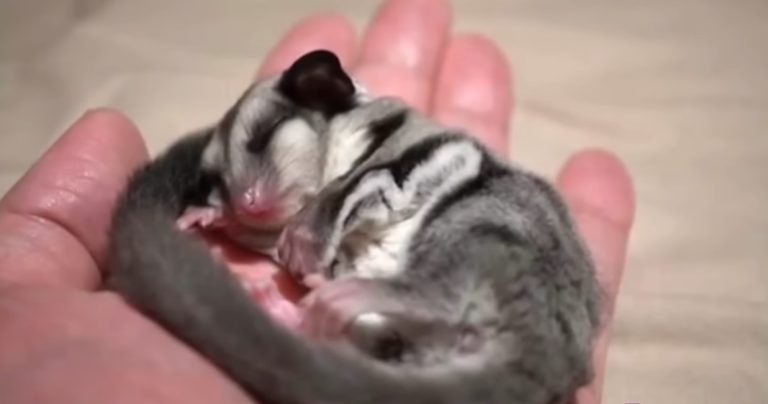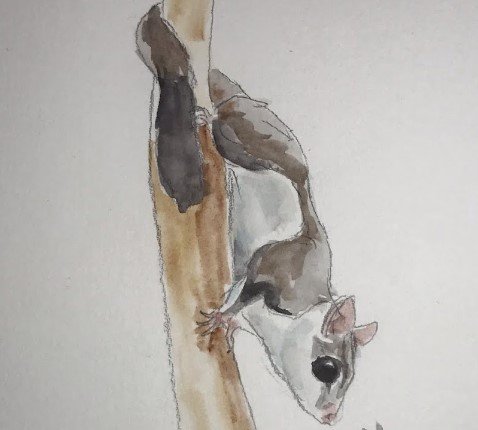How To Trim Sugar Glider Nails
Trimming your sugar glider’s nails is an essential part of their grooming routine. Overgrown nails can cause discomfort or even injury, and neglecting them can lead to serious health problems. But many pet owners find nail trimming to be a daunting task, especially if they are new to sugar gliders. The good news is that with the right tools and technique, trimming your sugar glider’s nails can be a quick and easy process.
In this article, we will provide a comprehensive guide on how to trim your sugar glider nails safely and effectively. We’ll cover everything from the tools you need to how to restrain your glider, and we’ll share some tips on how to make the process less stressful for both you and your pet. With proper nail care, your sugar glider can live a comfortable and healthy life in your home.
Do Sugar Gliders Need Their Nails Trimmed?

Yes, sugar gliders need their nails trimmed regularly. In the wild, sugar gliders use their sharp nails to climb trees and forage for food. However, in captivity, they do not have the same opportunities to wear down their nails naturally. Overgrown nails can cause discomfort, pain, and even injury to your sugar glider. Long nails can also get caught in fabrics or cage bars, leading to broken or torn nails.
Trimming your sugar glider’s nails is a quick and easy process that can prevent these problems and keep your pet healthy and comfortable. Regular nail care is an essential part of sugar glider ownership and should be done every few weeks to ensure that your pet’s nails remain at a safe and manageable length.
What Factors to Consider Before Trimed Sugar Gliders Nails
Here are some important factors to consider before trimming your sugar glider’s nails:
Age
Younger sugar gliders have more delicate nails and may require more frequent trimming. Older sugar gliders may have thicker or more brittle nails that require special care.
Health
If your sugar glider has a health condition or injury, consult with a veterinarian before attempting to trim their nails.
Comfort
Make sure your sugar glider is comfortable and relaxed before trimming their nails. Use a towel or pouch to help restrain them and avoid causing stress or injury.
Nail length
Check your sugar glider’s nails regularly and trim them when they begin to get too long. Overgrown nails can cause discomfort or injury to your pet.
Nail color
Sugar gliders with darker nails may be harder to trim since the quick (the pink area inside the nail that contains blood vessels) is more difficult to see. Take extra care when trimming dark nails to avoid cutting the quick.
Tools
Use sharp, high-quality nail clippers designed for small animals to avoid causing pain or injury to your sugar glider.
Styptic powder
Have styptic powder on hand in case you accidentally cut the quick. This powder can help stop bleeding and prevent infection.
Professional help
If you’re unsure about trimming your sugar glider’s nails or if your pet has particularly long or thick nails, consider seeking help from a veterinarian or experienced pet groomer.
Accessories Needed To Trim Your Sugar Glider Nails

Here are the accessories needed to trim your sugar glider nails:
- Nail clippers: Use sharp, high-quality nail clippers designed for small animals. Avoid using human nail clippers or scissors, as they can cause pain and injury.
- Towel or pouch: Use a towel or pouch to help restrain your sugar glider during the trimming process. This can help keep them calm and prevent them from moving around too much.
- Styptic powder: Have styptic powder on hand in case you accidentally cut the quick. This powder can help stop bleeding and prevent infection.
- Treats: Reward your sugar glider with a treat after trimming their nails to help make the experience positive and enjoyable for them.
- Magnifying glass: If your sugar glider has dark nails, a magnifying glass can help you see the quick and avoid cutting it.
- Nail file: Use a nail file to smooth the edges of your sugar glider’s nails after trimming them. This can help prevent them from getting caught on fabrics or cage bars.
- Grooming scissors: If your sugar glider has particularly long or thick nails, grooming scissors can help make the trimming process easier and more effective.
Having these accessories on hand can make trimming your sugar glider’s nails easier and more efficient, ensuring a safe and comfortable experience for your pet.
Trim Sugar Glider Nails: Step-by-Step Process

Here is a step-by-step process to help you trim your sugar glider’s nails safely and effectively:
Step1:Gather the necessary supplies
You will need nail clippers, styptic powder, and a towel or pouch to help restrain your sugar glider.
Step2:Prepare your sugar glider
Place your sugar glider in a secure location and wrap them in a towel or place them in a pouch. This will help keep them calm and still during the trimming process.
Step3:Hold their paw
Gently hold your sugar glider’s paw and use the nail clippers to trim the tip of each nail, being careful not to cut the quick (the pink area inside the nail that contains blood vessels). Use sharp, high-quality nail clippers designed for small animals.
Step4:Use styptic powder if needed
If you accidentally cut the quick, use styptic powder to stop any bleeding. Apply the powder to the affected nail with a cotton swab or your finger.
Step5:Repeat the process
Repeat steps 3 and 4 on each paw, taking breaks if your sugar glider becomes restless or stressed.
Step6:Reward your sugar glider
Once you’re finished, reward your sugar glider with a treat and lots of love and affection. This will help make the experience positive and enjoyable for your pet.
Step7:Regular maintenance
Trim your sugar glider’s nails every few weeks to keep them at a safe and manageable length. Remember to check their nails regularly and trim them when they begin to get too long.
With proper nail care, your sugar glider will be healthier and more comfortable in their home. If you’re unsure or uncomfortable trimming your sugar glider’s nails, seek help from a veterinarian or experienced pet groomer.
Ask the Vet: Sugar Glider Nail Trimming
Regular nail trimming is an essential part of a sugar glider’s grooming routine. Use sharp, high-quality nail clippers designed for small animals and avoid cutting the quick, which is the pink area inside the nail that contains blood vessels. If you accidentally cut the quick, use styptic powder to stop any bleeding.
If you’re unsure or uncomfortable trimming your sugar glider’s nails, seek help from a veterinarian or experienced pet groomer. It’s recommended to trim their nails every few weeks to prevent discomfort, pain, and injury. Regular nail care can ensure that your sugar glider lives a happy and healthy life in your home.
Advantages and Disadvantages of Sugar Glider Nail Trimming
Advantages and disadvantages of sugar glider nail trimming are:
Advantages:
- Prevents injury: Regular nail trimming can prevent overgrown nails that can cause discomfort, pain, or injury to your sugar glider.
- Keeps nails healthy: Trimming nails can help prevent nails from splitting or breaking, which can lead to infection.
- Easier to handle: Trimmed nails make it easier to handle and restrain your sugar glider.
- Prevents damage: Trimmed nails can prevent damage to fabrics and cage bars.
Disadvantages:
- Risk of injury: If you accidentally cut the quick, it can cause pain and bleeding to your sugar glider.
- Stressful for your pet: Some sugar gliders may find nail trimming to be a stressful experience.
- Requires practice: Nail trimming requires practice to master the technique and avoid cutting the quick.
- Need for specialized tools: You need specialized tools to trim sugar glider nails, which can be an additional expense.
Final Thoughts
In summary, trimming your sugar glider’s nails is an important part of their grooming routine that can prevent discomfort, pain, and injury. It’s recommended to trim their nails every few weeks, using sharp, high-quality nail clippers designed for small animals, and avoiding cutting the quick. If you accidentally cut the quick, use styptic powder to stop bleeding. Regular nail care can ensure that your sugar glider lives a happy and healthy life in your home.
Additionally, it’s important to consider factors such as age, health, and comfort when trimming your sugar glider’s nails. Using the right tools and technique, as well as seeking help from a veterinarian or experienced pet groomer if needed, can make the process easier and more effective. Overall, trimming your sugar glider’s nails is a simple but essential task that can prevent potential health problems and keep your pet safe and comfortable.
FAQs
1.Can I cut sugar glider nails?
Yes, you can cut your sugar glider’s nails, and it’s recommended to do so every few weeks to prevent discomfort or injury. Use sharp, high-quality nail clippers designed for small animals and avoid cutting the quick.
2.What do you use to cut sugar glider nails?
It’s recommended to use sharp, high-quality nail clippers designed for small animals to cut your sugar glider’s nails. Avoid using human nail clippers or scissors, which can cause pain or injury to your pet.
3.How do you sedate a sugar glider?
It’s not recommended to sedate a sugar glider for nail trimming or any other routine grooming procedures. Instead, you can use a towel or pouch to help restrain your sugar glider and keep them calm during the process.
4.Do sugar gliders have sharp claws?
Yes, sugar gliders have sharp claws that can grow long and cause discomfort or injury to themselves or their owners. Trimming their nails every few weeks is essential to prevent any potential problems.
5.What do vets use to trim nails?
Veterinarians may use specialized nail clippers or a dremel tool to trim an animal’s nails. These tools are designed to safely and effectively trim nails without causing pain or injury to the animal.







